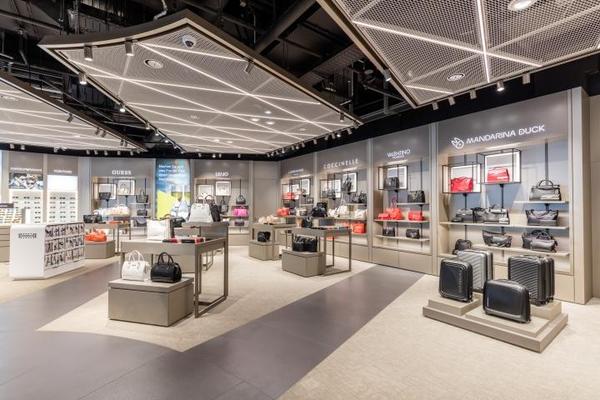Designing the Future of Retail: Cutting-Edge Store Fixtures and Retail Display Solutions

In the dynamic world of retail, staying ahead means continually evolving, innovating, and reimagining the shopping experience. The store fixtures and retail displays play a pivotal role in shaping this experience, acting as the bridge between the physical and digital realms. In this article, we delve into the cutting-edge trends and technologies shaping the future of retail design, exploring how forward-thinking brands are leveraging innovative store fixtures and display solutions to create immersive, memorable, and seamless shopping experiences.
1. The Fusion of Physical and Digital
The future of retail design lies in seamlessly integrating the physical and digital worlds. Brands are leveraging technologies like augmented reality (AR) and interactive displays to blur the lines between online and offline shopping. AR-powered mirrors allow customers to virtually try on clothing and accessories, while interactive screens provide product information, styling tips, and personalized recommendations. This fusion of physical and digital not only enhances the shopping experience but also enables retailers to collect valuable data on customer preferences and behavior.
2. Personalization at Scale
Personalization has become a cornerstone of modern retail, and innovative store fixtures are making it easier than ever to deliver tailored experiences at scale. Smart shelves equipped with sensors and RFID technology can track inventory levels in real-time, enabling retailers to offer personalized product recommendations based on individual preferences and browsing history. Dynamic pricing displays adjust prices in response to demand, promotions, and inventory levels, ensuring that customers always receive the most relevant offers.
3. Sustainability and Eco-Friendly Design
As consumers become increasingly environmentally conscious, sustainability has emerged as a key consideration in retail design. Forward-thinking brands are embracing eco-friendly materials, energy-efficient lighting, and modular fixtures that can be repurposed and recycled. From reclaimed wood shelving to biodegradable packaging displays, retailers are prioritizing sustainability without compromising on style or functionality. By adopting environmentally friendly practices, brands can appeal to eco-conscious consumers and reduce their environmental footprint.
4. Flexible and Adaptive Store Layouts
The rise of pop-up shops, temporary activations, and experiential retail concepts has led to a shift towards more flexible and adaptive store layouts. Modular store fixtures and movable displays enable retailers to quickly and easily reconfigure their spaces to accommodate changing trends, seasonal promotions, and customer preferences. Mobile checkout stations, interactive kiosks, and portable displays empower staff to engage with customers anywhere in the store, enhancing the overall shopping experience and driving sales.
5. Immersive and Interactive Experiences
In an age of digital distraction, retailers are increasingly focusing on creating immersive and interactive experiences that captivate the senses and foster emotional connections with customers. From projection mapping installations to interactive storytelling experiences, innovative store fixtures are transforming retail spaces into dynamic and engaging environments. By leveraging cutting-edge technologies and creative design elements, brands can create memorable experiences that keep customers coming back for more.
Sustainability and Eco-Friendly Innovations in Retail displays
· Introduction to Sustainable Retail Displays: Setting the stage for the importance of sustainability in modern retail, this section highlights the growing awareness among consumers and businesses regarding environmental concerns and the role of retail displays in contributing to sustainability efforts.
· Eco-Friendly Materials: Discussing the shift towards using environmentally friendly materials in retail displays, such as recycled plastics, reclaimed wood, bamboo, and other sustainable options. This section emphasizes the benefits of these materials in reducing carbon footprint and minimizing waste.
· Energy-Efficient Lighting: Exploring the adoption of energy-efficient lighting solutions, such as LED technology, in retail displays. This section highlights the role of lighting in enhancing product visibility while reducing energy consumption and operating costs for retailers.
· Modular and Reusable Designs: Examining the trend towards modular and reusable retail display designs that allow for easy disassembly, reconfiguration, and reuse. This section showcases examples of innovative display systems that can be adapted to changing store layouts and seasonal promotions, reducing the need for new fixtures and minimizing waste.
· Biodegradable Packaging and Signage: Discussing the importance of using biodegradable materials for packaging and signage in retail displays. This section explores the benefits of compostable packaging materials and water-based inks in reducing environmental impact and promoting circularity in the retail industry.
6. Data-Driven Insights and Analytics
In today’s data-driven world, retailers have access to an abundance of information about their customers’ preferences, behaviors, and purchasing habits. Advanced analytics tools and sensors embedded in store fixtures provide real-time insights into customer traffic patterns, product interactions, and sales performance. By harnessing these data-driven insights, retailers can optimize store layouts, refine merchandising strategies, and personalize the shopping experience to better meet the needs and preferences of their customers.
7. The Future of Retail Design
As we look ahead to the future of retail design, one thing is clear: the possibilities are endless. From virtual reality-enabled fitting rooms to holographic product displays, the next generation of store fixtures promises to revolutionize the way we shop. As technology continues to advance and consumer expectations evolve, retailers must embrace innovation, experimentation, and creativity to stay ahead of the curve and deliver truly exceptional shopping experiences.
At the end:
In conclusion, the future of retail design is bright and full of possibilities. By embracing cutting-edge technologies, sustainable practices, and flexible design solutions, brands can create immersive, personalized, and memorable shopping experiences that delight customers and drive business growth. As we continue to innovate and push the boundaries of retail design, one thing is certain: the future of retail is here, and it’s more exciting than ever before.





